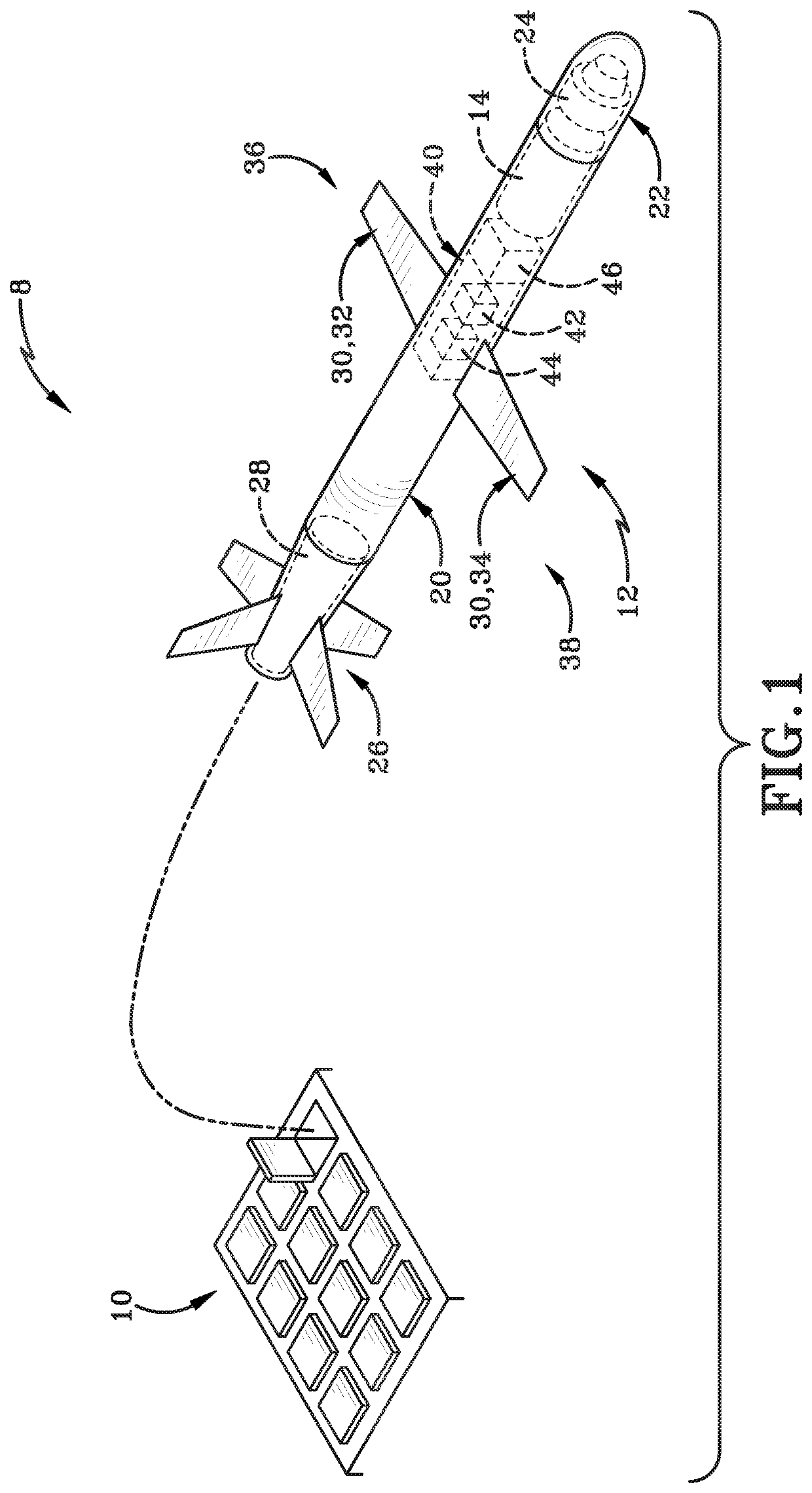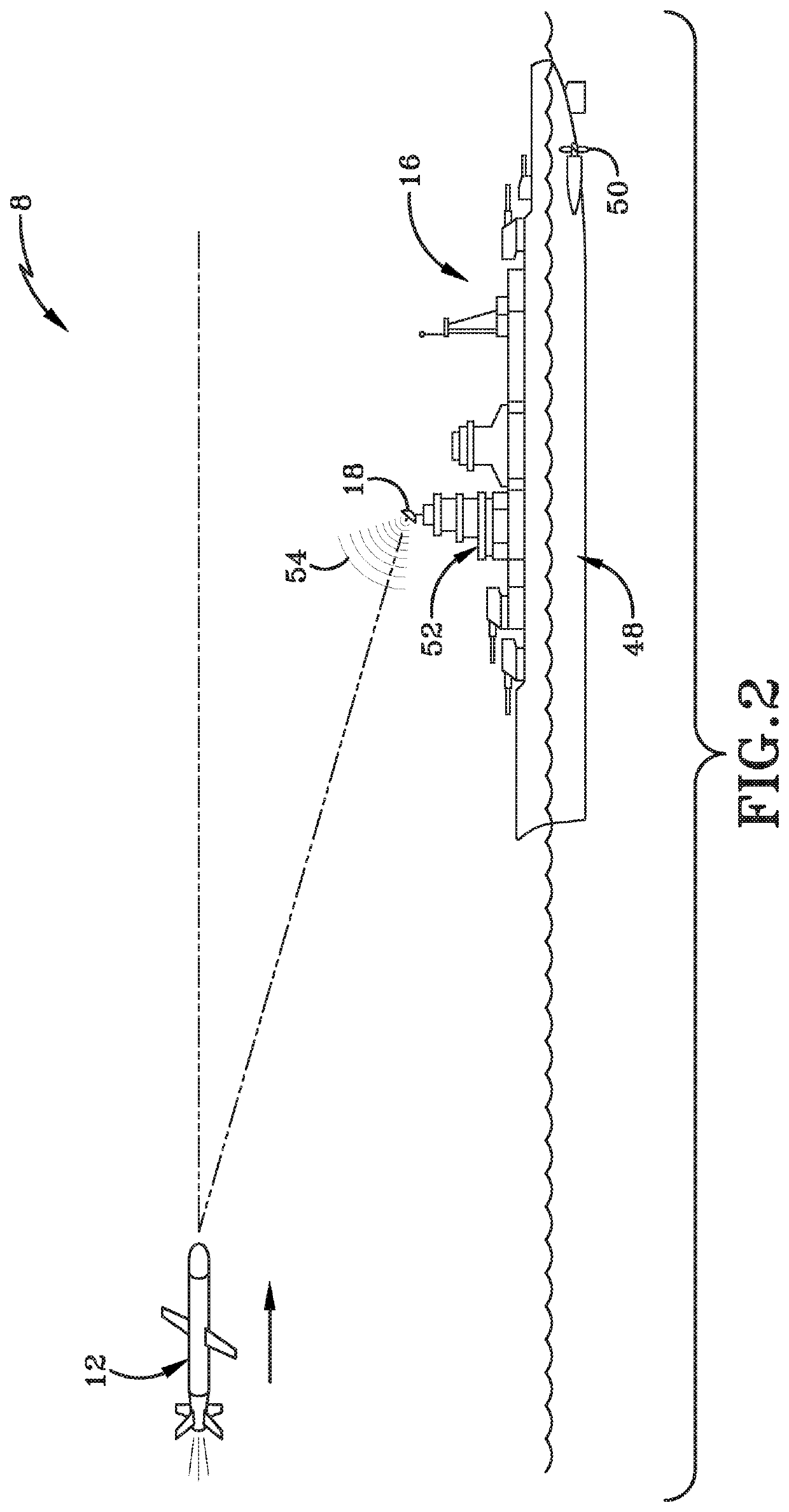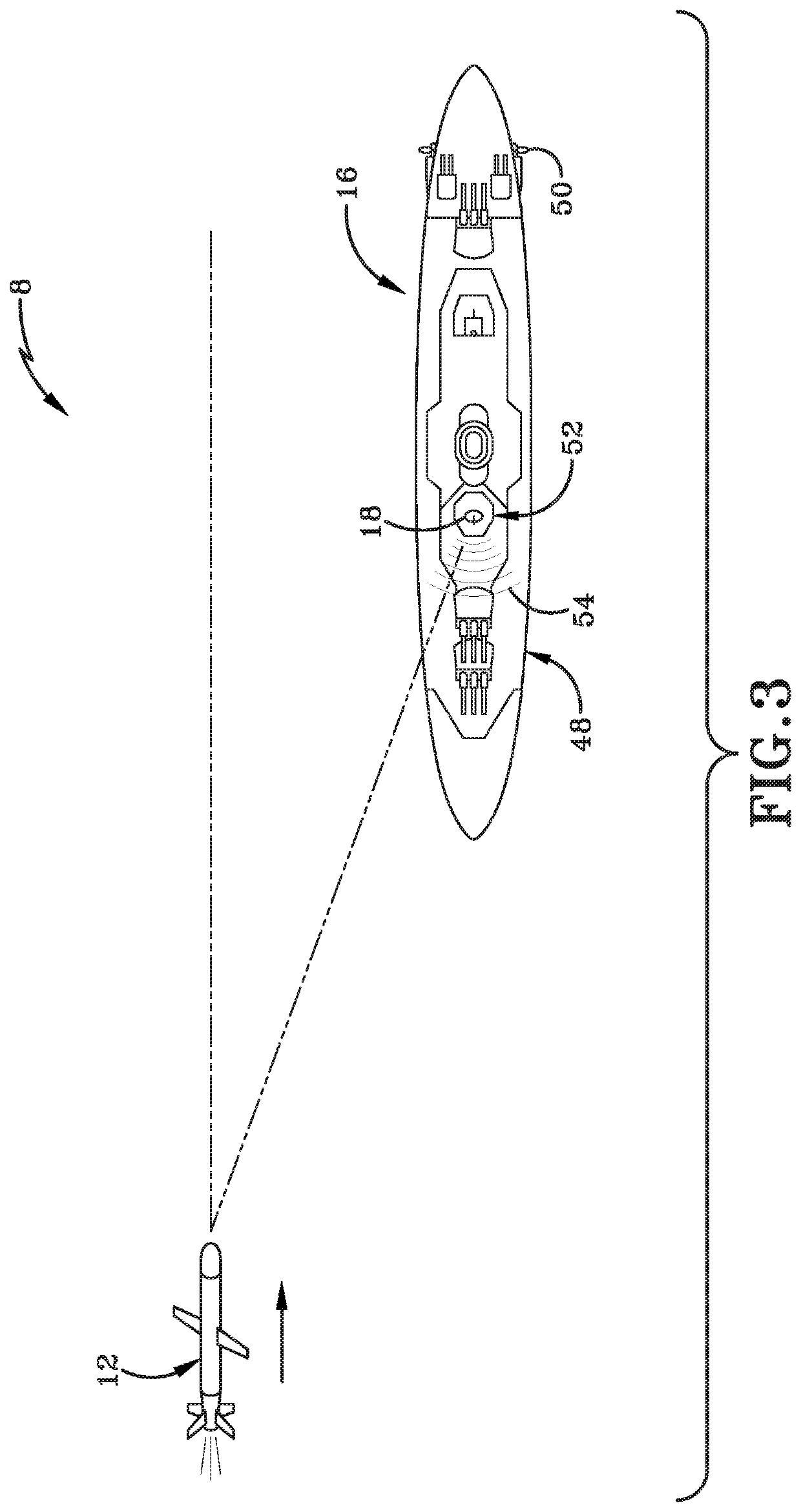Fusion between aoa and tdoa
a technology of fusion and navigation system, applied in direction finders, instruments, using reradiation, etc., can solve the problems of missile veering off course over time and distance, increasing the possibility of missed targets, and single projectile losing access to part of the navigation system
- Summary
- Abstract
- Description
- Claims
- Application Information
AI Technical Summary
Benefits of technology
Problems solved by technology
Method used
Image
Examples
Embodiment Construction
[0021]A navigation system 8 for a guided projectile is shown and provided herein. As discussed further herein, a guided projectile can be a missile or cruise missile, such as a long-range anti-ship missile (LRASM). It will be understood that the navigation system provided herein may be applied to other guided munitions or projectiles, aircraft, both manned or unmanned, or other systems utilizing navigational aids. As further described herein, navigation system 8 relates to targeting of enemy vehicles, aircraft, ships, and / or stationary installations. It will be further understood that the targets described herein may be mobile or stationary and may be known or unknown as further discussed below.
[0022]Current navigation systems used with cruise missiles generally rely on radar pulses or radio frequency pulses from an emitter on a target. The general location of the target may be determined by a firing platform of a missile prior to firing. In such implementations, target data may be ...
PUM
 Login to View More
Login to View More Abstract
Description
Claims
Application Information
 Login to View More
Login to View More - R&D
- Intellectual Property
- Life Sciences
- Materials
- Tech Scout
- Unparalleled Data Quality
- Higher Quality Content
- 60% Fewer Hallucinations
Browse by: Latest US Patents, China's latest patents, Technical Efficacy Thesaurus, Application Domain, Technology Topic, Popular Technical Reports.
© 2025 PatSnap. All rights reserved.Legal|Privacy policy|Modern Slavery Act Transparency Statement|Sitemap|About US| Contact US: help@patsnap.com



